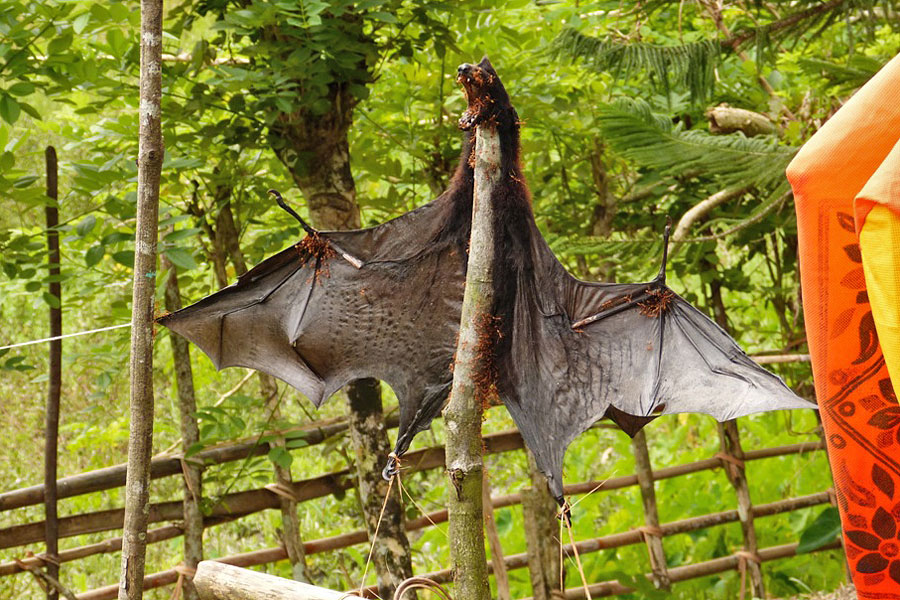
On 26th December 2013, while birding in Mayabunder (North-Middle Andaman), my field assistants and I passed a Ranchi household where we saw the skinned remains of a male Blyth’s flying fox tied to the fence to be decomposed by ants. On further enquiry the man of the house brought a female flying fox that he had shot the previous night. A bullet had punctured the bat’s wing and there was another wound near her elbow rendering her incapable of flight.
Flying foxes are the largest bats in the world and are found in the Old World. They have a unique distribution as many species have diversified as endemics (only present in a particular geographic region and nowhere else in the world) in remote oceanic islands where they are the most important seed dispersers for most native plants. The Blyth’s or Christmas Island Flying Fox (Pteropus melanotus) is a species of flying fox which occurs in the Andaman and Nicobar Islands, Sumatra and further south in Christmas Island of Australia. It is one of the five species of flying foxes found in India (only one, the Indian Flying Fox, occurs in the mainland while the rest are all in Andaman and Nicobar islands).
As they are among the largest native mammals on many islands, hunting of flying foxes is commonplace. Consequently, a majority of the island flying foxes are classified as ‘Vulnerable’ or more under the IUCN Red List; and Blyth’s flying fox is no exception. Subsistence hunting is rampant in the Andaman and Nicobar Islands. I was also told by many people that flying fox meat is a cure against jaundice. Moreover, increasing cultivation of fruit trees like Sapota and Areca; which flying foxes visit at night, bring these bats into conflict with humans, resulting in retaliatory killing.
In spite of being an island population of global importance, the populations of Blyth’s flying foxes of Andaman and Nicobar have little protection. Like all other fruit bats they are classified under Schedule V (vermin) of the Wildlife (Protection) Act, 1972. There is an urgent need to rework the legal status of all Indian bats in general and the island flying foxes in particular.

 CI is a non-profit, non-commercial portal that aims to facilitate wildlife and nature conservation by providing reliable information and the tools needed to campaign effectively.
CI is a non-profit, non-commercial portal that aims to facilitate wildlife and nature conservation by providing reliable information and the tools needed to campaign effectively.
Chosen as 'Picture of the Week'
In spite of being an island population of global importance, the populations of Blyth’s flying foxes of Andaman and Nicobar have little protection. Like all other fruit bats they are classified under Schedule V (vermin) of the Wildlife (Protection) Act, 1972. There is an urgent need to rework the legal status of all Indian bats in general and the island flying foxes in particular.